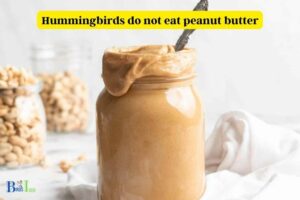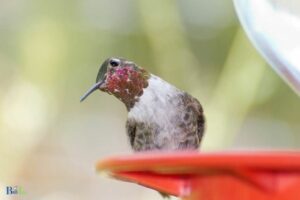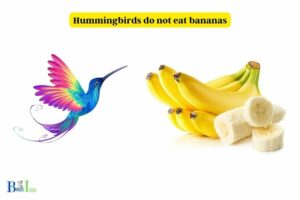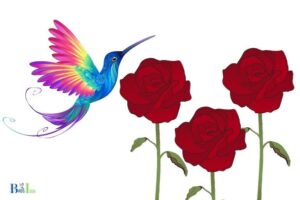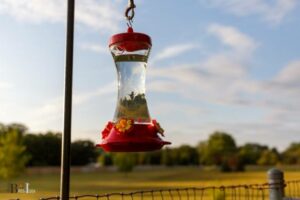Hummingbirds in Bay Area – Smallest Bird
Hummingbirds are one of the smallest and most iconic species of birds found in the Bay Area. These birds can be seen in a variety of habitats, including urban and rural areas, as well as in fields, forests, parks, and gardens.
Their slender bodies and colorful feathers make them a striking sight to behold. Hummingbirds feed primarily on nectar from flowers and can also occasionally be seen chasing insects in mid-air for additional sustenance.

Hummingbirds are a delightful addition to the natural environment and can be encouraged to visit gardens and other outdoor spaces in the Bay Area by setting up feeders with nectar or flowers that produce nectar.
Keeping these feeders clean and providing fresh water sources can also help attract these beautiful birds. Hummingbirds can brighten up any outdoor environment and are delightful to watch.
DID YOU KNOW
An estimated 1000 different species of hummingbirds have been documented worldwide, with 3 main species known to reside in the Bay Area.
What Are Hummingbirds and Where Are They Found in the Bay Area?
Hummingbirds are small, colorful birds that are native to the Americas. They are the smallest of all migrating birds, and are known for their remarkable hovering flight abilities.
In the Bay Area, there are several species of Hummingbirds that can be spotted throughout the year.

The most common species that inhabit the Bay Area are the Anna’s Hummingbird, the Black-chinned Hummingbird, the Allen’s Hummingbird, and the Rufous Hummingbird.
These species are most easily seen in the spring and summer months and can be seen in parks, gardens, and open fields.
Hummingbirds feed on the nectar of flowers and can also be attracted to feeders with sugar-water solutions. In the Bay Area, hummingbirds can be found in many places, including:
- San Francisco Botanical Gardens
- San Jose Municipal Rose Garden
- Santa Cruz County Arboretum
- Henry Cowell Redwoods State Park
- Audubon Canyon Ranch
- Golden Gate Park
- San Francisco Zoo
Hummingbirds are an integral part of the ecosystem and play a vital role in pollination. They are an amazing species to observe in the Bay Area and provide a great source of entertainment for bird watchers.
What Do Hummingbirds Look Like?
Hummingbirds are small birds with a unique appearance. They have a long slender beak, and can range in size from 2 to 8 inches long.
Their wings are wide and they can beat them quickly, allowing them to hover in the air like a helicopter.

Common hummingbird species have vibrant colors that range from iridescent blues, greens and blacks to red, white, and brown.
Most species have an iridescent throat patch that ranges from gray to pinkish-red to a deep, metallic green.
Some of the key features of hummingbirds are:
- Small size – Hummingbirds range from 2 to 8 inches in length.
- Long beak – Hummingbirds have a long, slender beak which helps them to reach inside of flowers for nectar.
- Quick wings – They can beat their wings from 50 to 80 times per second, allowing them to hover in mid-air.
- Colorful – Most hummingbird species have vibrant colors ranging from iridescent blues, greens and blacks to red, white, and brown.
- Iridescent throat patch – Most species have an iridescent throat patch that ranges from gray to pinkish-red to a deep, metallic green.
All these features make hummingbirds some of the most unique and beautiful birds in the world.
“The hummingbird represents joy, playfulness, and lightness of heart – reminding us that life is best enjoyed when we take the time to savor each sweet moment”.
birdsidea
What Do Hummingbirds Eat?
Hummingbirds are one of the smallest and most fascinating birds. They are known for their ability to fly backward, hover, and fly in circles. Hummingbirds primarily feed on nectar and insects.

Their diet consists of the following:
- Nectar: Nectar is a sugary liquid found in flowers. Hummingbirds have a long tongue and curved beak that help them suck the nectar from flowers.
- Insects: Hummingbirds also feed on small insects such as ants, spiders, and moths.
- Fruit: They also feed on small berries and fruits.
In addition to these food sources, hummingbirds get their water from the nectar they consume. Hummingbirds require a considerable amount of food and water in order to survive and thrive. Therefore, they need to feed often throughout the day.
How Can We Encourage Hummingbirds to Visit Our Homes and Gardens?
Hummingbirds are some of the most fascinating and beautiful birds to visit our homes and gardens. To attract hummingbirds, we can take a few simple steps:

- Provide a variety of nectar-rich flowers for the birds to feed on. This can include annuals, perennials, and vines.
- Place feeders filled with nectar in areas where hummingbirds can easily find them. Hummingbird feeders should be placed in the shade and should be cleaned regularly.
- Install birdhouses or other nesting locations. Hummingbirds can nest in small spaces, such as flower baskets, birdhouses, and even small tree crevices.
- Avoid using pesticides or herbicides in your yard. Many chemicals are toxic to birds, and can prevent hummingbirds from visiting your garden.
Encouraging hummingbirds to visit our homes and gardens is a great way to enjoy the beauty of these amazing birds.
With the right preparation, we can create an inviting environment for hummingbirds and ensure that they return year after year.
What Is the Impact of Hummingbirds on the Environment?
Hummingbirds are small yet vital components of many ecosystems around the world. They play an important role in pollination, seed dispersal, and insect control.
They also serve as an indicator species providing insight into the overall health of their habitats. So, what is the impact of hummingbirds on the environment?

Pollination:
Hummingbirds are important pollinators, especially for certain types of plants. They help to ensure the continued production of flowers and fruits, which are necessary for other species to exist.
Seed Dispersal:
Hummingbirds help to disperse seeds, which helps to increase the diversity of plants within a habitat. This is important for the overall health of the ecosystem.
Insect Control:
Hummingbirds are important consumers of insects, which keeps pest populations in check. This ensures the survival of other species that rely on these plants and insects for food.
Indicator Species:
Hummingbirds are sensitive to changes in their environment. So, if there is a decline in the hummingbird population, it is often indicative of a larger problem in the habitat.
Overall, hummingbirds have a significant impact on the environment. They help to keep ecosystems healthy and balanced by providing essential pollination, seed dispersal, insect control, and acting as an indicator species.
What Kinds of Feeders and Plants Attract Hummingbirds?
Hummingbirds are a popular species of birds that are attracted to gardens and yards that offer a variety of food sources and plants. The following are some of the best feeders and plants that attract hummingbirds:

Feeders:
- Hummingbird feeders: Fill feeders with a nectar solution of four parts water to one part white sugar and place them in sunny locations.
- Platform feeders: These feeders offer a variety of food options, such as nuts, seeds, and fruits.
- Fruit feeders: Hang these feeders from branches and fill them with small pieces of fresh fruit.
Plants:
- Flowers: Certain flowers are attractive to hummingbirds, such as trumpet, cardinal, and columbine.
- Fruit-bearing plants: Plant shrubs and trees that produce berries and other fruits that hummingbirds enjoy.
- Trees: Plant trees that provide a good source of nectar and insects, such as maples and oaks.
By providing these kinds of feeders and plants, you can create an attractive and inviting habitat for hummingbirds.
How Can We Keep Hummingbird Feeders and Water Sources Clean?
Keeping hummingbird feeders and water sources clean is essential for attracting and keeping hummingbirds healthy.
Cleaning the feeders and water sources periodically will ensure hummingbirds have access to clean and healthy food sources.

Here are some tips to keep feeders and water sources clean:
- Clean feeders and water sources at least every few weeks.
- Disassemble the feeders, then wash them in warm, soapy water.
- Rinse with clean water and allow to air dry before refilling.
- Change water daily.
- Dilute bleach or vinegar can be used to sanitize the feeders.
- Choose a place to hang feeders away from direct sunlight and rain.
By following these simple steps, you can help ensure a safe and healthy environment for hummingbirds.
Keep your feeders and water sources clean and watch hummingbirds come back to your yard again and again!
FAQ
What types of hummingbirds can be seen in the Bay Area?
Where can I spot hummingbirds in the Bay Area?
What kind of plants attract hummingbirds to the Bay Area?
Does the Bay Area offer special opportunities for hummingbird viewing?
Are there any restrictions on feeding hummingbirds in the Bay Area?
Conclusion
Hummingbirds are beloved birds that can be encouraged to visit gardens, parks, and other outdoor spaces in the Bay Area.
Setting up feeders with nectar or planting flowers that produce nectar will help attract these beautiful birds which have slender bodies and colorful feathers. Watching hummingbirds in a natural environment can be a calming and rewarding experience.

